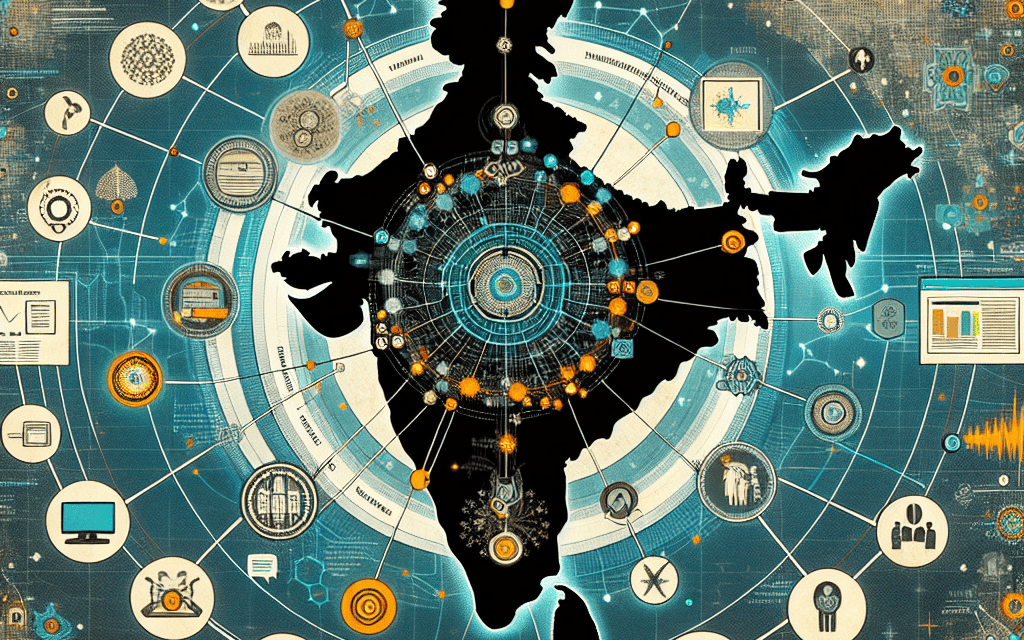Seeking Integration of HMIS with Other Public Health Information Systems in India

In the rapidly evolving landscape of public health, the integration of Health Management Information Systems (HMIS) with other public health information systems is becoming increasingly crucial. In India, a country with a vast and diverse population, the need for a cohesive and efficient health information system is paramount. This article explores the potential benefits, challenges, and strategies for integrating HMIS with other public health information systems in India.
The Current State of HMIS in India
Health Management Information Systems (HMIS) in India have been instrumental in collecting, storing, and analyzing health data. These systems are designed to support decision-making processes at various levels of the healthcare system. However, the current state of HMIS in India is characterized by fragmentation and inefficiencies.
One of the primary challenges is the lack of standardization across different states and regions. Each state in India has its own set of health information systems, leading to inconsistencies in data collection and reporting. This fragmentation hampers the ability to obtain a comprehensive view of the nation’s health status.
Moreover, the existing HMIS infrastructure often struggles with data quality issues. Inaccurate or incomplete data can lead to misguided policy decisions and resource allocation. To address these challenges, there is a growing need to integrate HMIS with other public health information systems to create a unified and reliable data ecosystem.
- Fragmentation across states
- Lack of standardization
- Data quality issues
Benefits of Integrating HMIS with Other Public Health Information Systems
Integrating HMIS with other public health information systems offers numerous benefits that can significantly enhance the efficiency and effectiveness of healthcare delivery in India. One of the most significant advantages is the ability to create a comprehensive and holistic view of the nation’s health landscape.
By integrating various health information systems, policymakers and healthcare providers can access a wealth of data that provides insights into disease patterns, healthcare utilization, and population health trends. This data-driven approach enables evidence-based decision-making, leading to more targeted interventions and resource allocation.
Furthermore, integration can improve the timeliness and accuracy of data reporting. Real-time data sharing between different systems allows for quicker identification of emerging health threats and more effective responses. This is particularly crucial in the context of infectious disease outbreaks, where timely interventions can save lives.
- Comprehensive health landscape view
- Evidence-based decision-making
- Improved data timeliness and accuracy
Challenges in Integrating HMIS with Other Systems
While the benefits of integration are clear, there are several challenges that need to be addressed to achieve seamless integration of HMIS with other public health information systems in India. One of the primary challenges is the lack of interoperability between different systems.
Interoperability refers to the ability of different systems to communicate and exchange data effectively. In India, many health information systems operate in silos, using different data formats and standards. This lack of interoperability hinders data sharing and integration efforts.
Another significant challenge is the resistance to change among healthcare providers and administrators. Integrating different systems requires changes in workflows and processes, which can be met with resistance from those accustomed to existing practices. Overcoming this resistance requires effective change management strategies and stakeholder engagement.
- Lack of interoperability
- Resistance to change
- Data privacy and security concerns
Strategies for Successful Integration
To overcome the challenges associated with integrating HMIS with other public health information systems, several strategies can be employed. One of the most critical strategies is the adoption of standardized data formats and protocols.
Standardization ensures that data can be easily shared and understood across different systems. The use of international standards, such as HL7 and FHIR, can facilitate interoperability and data exchange. Additionally, developing a national framework for health information exchange can provide a roadmap for integration efforts.
Another essential strategy is capacity building and training for healthcare providers and administrators. Providing training on new systems and processes can help overcome resistance to change and ensure a smooth transition to integrated systems. Capacity building efforts should also focus on data management and analysis skills to maximize the benefits of integrated data.
- Adoption of standardized data formats
- Capacity building and training
- Development of a national framework
Case Studies and Examples
Several countries have successfully integrated their health information systems, providing valuable lessons for India. One notable example is Rwanda, which has implemented a national health information exchange platform that integrates data from various sources, including HMIS, electronic medical records, and laboratory information systems.
The Rwandan experience highlights the importance of strong government leadership and stakeholder collaboration in achieving successful integration. By involving all relevant stakeholders, including healthcare providers, policymakers, and technology vendors, Rwanda was able to create a unified health information system that supports data-driven decision-making.
Another example is Estonia, which has developed a highly integrated e-health system that allows for seamless data exchange between different healthcare providers. Estonia’s success can be attributed to its focus on interoperability and the use of a unique national identification system that facilitates data sharing.
- Rwanda’s national health information exchange
- Estonia’s integrated e-health system
- Lessons from international experiences
Conclusion
The integration of HMIS with other public health information systems in India holds immense potential to transform the country’s healthcare landscape. By creating a unified and comprehensive data ecosystem, India can enhance its ability to respond to public health challenges, improve healthcare delivery, and achieve better health outcomes for its population.
While there are challenges to overcome, including interoperability issues and resistance to change, the benefits of integration far outweigh the obstacles. By adopting standardized data formats, building capacity, and learning from international experiences, India can pave the way for a more efficient and effective health information system.
Ultimately, the integration of HMIS with other public health information systems is not just a technological endeavor but a strategic imperative for improving the health and well-being of India’s population. By embracing this integration, India can position itself as a leader in leveraging data for better health outcomes.





